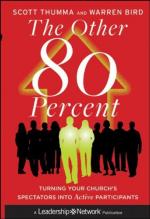No. 183. Saturday, September 29, 1711. Addison.
[Greek:
“Idmen pseudea
polla legein etymoisin homoia,
Idmen d’
eut’ ethel_omen alaethea mythaesasthai”.
Hesiod.]
Fables were the first Pieces of Wit that made their Appearance in the World, and have been still highly valued, not only in Times of the greatest Simplicity, but among the most polite Ages of Mankind. Jotham’s Fable of the Trees [1] is the oldest that is extant, and as beautiful as any which have been made since that Time. Nathan’s Fable of the poor Man and his Lamb [2] is likewise more ancient than any that is extant, besides the above-mentioned, and had so good an Effect, as to convey Instruction to the Ear of a King without offending it, and to bring the Man after God’s own Heart to a right Sense of his Guilt and his Duty. We find AEsop in the most distant Ages of Greece; and if we look into the very Beginnings of the Commonwealth of Rome, we see a Mutiny among the Common People appeased by a Fable of the Belly and the Limbs, [3] which was indeed very proper to gain the Attention of an incensed Rabble, at a Time when perhaps they would have torn to Pieces any Man who had preached the same Doctrine to them in an open and direct Manner. As Fables took their Birth in the very Infancy of Learning, they never flourished more than when Learning was at its greatest Height. To justify this Assertion, I shall put my Reader in mind of Horace, the greatest Wit and Critick in the Augustan Age; and of Boileau, the most correct Poet among the Moderns: Not to mention La Fontaine, who by this Way of Writing is come more into Vogue than any other Author of our Times.
The Fables I have here mentioned are raised altogether upon Brutes and Vegetables, with some of our own Species mixt among them, when the Moral hath so required. But besides this kind of Fable, there is another in which the Actors are Passions, Virtues, Vices, and other imaginary Persons of the like Nature. Some of the ancient Criticks will have it, that the Iliad and Odyssey of Homer are Fables of this Nature: and that the several Names of Gods and Heroes are nothing else but the Affections of the Mind in a visible Shape and Character. Thus they tell us, that Achilles, in the first Iliad, represents Anger, or the Irascible Part of Human Nature; That upon drawing his Sword against his Superior in a full Assembly, Pallas is only another Name for Reason, which checks and advises him upon that Occasion; and at her first Appearance touches him upon the Head, that Part of the Man being looked upon as the Seat of Reason. And thus of the rest of the Poem. As for the Odyssey, I think it is plain that Horace considered it as one of these Allegorical Fables, by the Moral which he has given us of several Parts of it. The greatest Italian Wits have applied themselves




